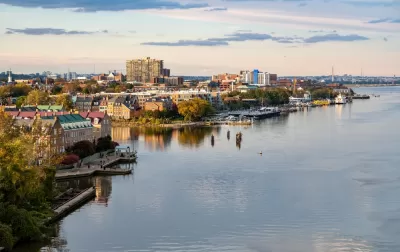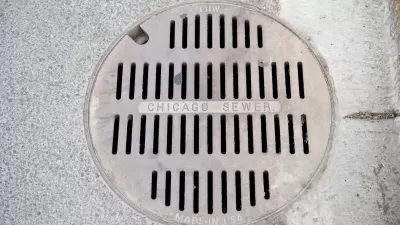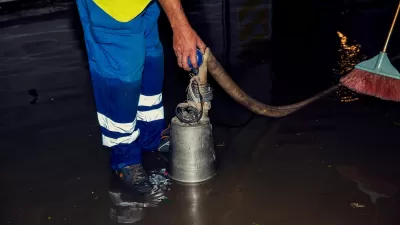After 16 months and $615 of tunneling, Alexandria, Virginia is nearly finished digging a 2.2-mile-long tunnel beneath the city and the Potomac River that will fix its sewage overflow problem.

After over a year of tunneling, Alexandria, Virginia’s efforts to reduce sewage overflows will soon bear fruit, reports Sarah Vogelsong for Inside Climate News. Officials hope the opening of a new 2.2-mile-long sewage storage tunnel beneath Alexandria and the Potomac River will solve the city’s sewage overflow problems during heavy storms, which they anticipate will only get more severe and frequent with climate change.
At issue is the city’s older combined sewer system infrastructure, which allows sewage and runoff from storms to flow through the same pipes; newer systems typically aren’t typically constructed this way. The article explains the problem: “In dry weather, all the flows are directed to wastewater plants for treatment. But heavy rainstorms can overwhelm the system, causing overflows of stormwater as well as sewage into rivers and creeks. That pollution poses a threat to both human health and aquatic life, frequently spurring cities to shut down or restrict access to their waterways.” Alexandria and the state capital, Richmond, both have this kind of system and have been required by the state legislature to address the overflows. But they aren’t alone. Another 700 municipalities across the United States, including New York City and Chicago, have combined sewer systems and deal with similar issues, though that number is down from 1,100 in 1994, Vogelsong writes.
“Curbing the pollution that stems from these systems is a daunting task, one that takes not only engineering on a massive scale, but money in the tens to hundreds of millions of dollars. In Virginia, Alexandria’s project comes with a price tag of $615 million. Richmond has spent roughly $300 million over the past 35 years and expects to pony up an additional $600 million to meet the state’s 2035 deadline,” the article reads. Vogelsong also reports that the issue might get increased attention when a new legal case brought by San Francisco against the EPA is scheduled to go before the Supreme Court in its next term. It will be one of the first major environmental cases since the Supreme Court overturned the Chevron doctrine, an action that stripped federal agencies of the final say on ambiguous policies contained within federal legislation like the Clean Water Act.

Alabama: Trump Terminates Settlements for Black Communities Harmed By Raw Sewage
Trump deemed the landmark civil rights agreement “illegal DEI and environmental justice policy.”

Planetizen Federal Action Tracker
A weekly monitor of how Trump’s orders and actions are impacting planners and planning in America.

Why Should We Subsidize Public Transportation?
Many public transit agencies face financial stress due to rising costs, declining fare revenue, and declining subsidies. Transit advocates must provide a strong business case for increasing public transit funding.

Understanding Road Diets
An explainer from Momentum highlights the advantages of reducing vehicle lanes in favor of more bike, transit, and pedestrian infrastructure.

New California Law Regulates Warehouse Pollution
A new law tightens building and emissions regulations for large distribution warehouses to mitigate air pollution and traffic in surrounding communities.

Phoenix Announces Opening Date for Light Rail Extension
The South Central extension will connect South Phoenix to downtown and other major hubs starting on June 7.
Urban Design for Planners 1: Software Tools
This six-course series explores essential urban design concepts using open source software and equips planners with the tools they need to participate fully in the urban design process.
Planning for Universal Design
Learn the tools for implementing Universal Design in planning regulations.
Caltrans
Smith Gee Studio
Institute for Housing and Urban Development Studies (IHS)
City of Grandview
Harvard GSD Executive Education
Toledo-Lucas County Plan Commissions
Salt Lake City
NYU Wagner Graduate School of Public Service





























